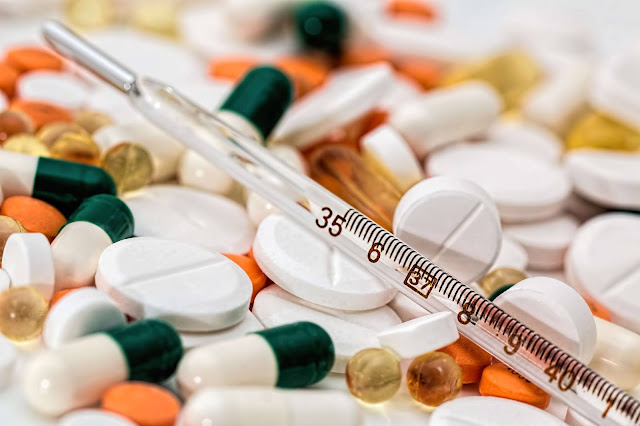How to lose weight at home: step by step instructions Decided to lose weight, but don't know where to start? We offer you step-by-step instructions on how to start losing weight at home (or in the gym) . This memo is suitable for both men and women, regardless of age and the number of extra pounds. A successful weight loss process consists of two components: a balanced diet and physical activity. So, where do we propose to start losing weight? NUTRITION: STEP BY STEP INSTRUCTIONS STEP 1: REMEMBER THE MAIN RULE OF LOSING WEIGHT The first step on the way to getting rid of excess weight is to remember the main principle of losing weight for yourself. You lose weight when you eat less food than your body can handle during the day. In this case, energy begins to be drawn from the reserve reserves on the body - fat deposits. Therefore, in essence, the process of losing weight is reduced to eating restrictions and creat...
Why is it necessary to examine the mammary gland?
In recent years, the incidence of breast cancer, despite advances in science and health, has been increasing annually in most countries. At the same time, many women seek treatment far out of time. Thus, about 10% of patients with newly diagnosed breast cancer (BC) die in the first year due to advanced stages of the disease. The Causes of breast cancer below
What is Breast Cancer?
Breast cancer is a disease characterized by the development of a malignant tumor in one or both breasts. Symptoms of breast cancer: lump in the breast, discharge from the nipple, discoloration and contouring of the breast, swollen lymph nodes in the armpit.
What factors increase the risk of developing breast cancer?
1.Age.women forty should be especially careful with themselves, since breast cancer is more often detected at the age of 40 to 60 years.
2.Heredity. In the presence of breast cancer in close relatives (especially at a young age), a woman should take particular care of herself. Fortunately, only about 5% of breast cancer is passed from generation to generation, the rest - only a predisposition.
3.Injuries, bruises of the breast are often a triggering factor in the occurrence of breast cancer. Be sure to consult an oncologist or gynecologist if there is a seal at the site of a bruised breast. Perhaps it will be just a hematoma. However, a specialist will be able to exclude the occurrence of cancer (often even he has to resort to additional diagnostic methods: ultrasound, mammography).
4.Mental trauma, stress, anxiety, psycho-emotional stress . It has been noticed that breast cancer occurs much more often in women whose character can be described as “emotional, anxious, anxious, hysterical, nervous”, or in women who are under conditions of long-term chronic stress due to life circumstances. That is why oncologists-mammologists almost always during consultations recommend taking some kind of sedative or herbal preparation.
5.Nutrition . The presence of a sufficient amount of antioxidant substances in the daily diet plays a significant role in the prevention of breast cancer. That is why, experts often prescribe multivitamin and mineral complexes with a high content of vitamins A, E, C and selenium.
6.Fibroadenoma (a benign breast tumor) increases your risk of developing breast cancer. 7. Diseases of the thyroid gland, liver, ovaries - also increase the risk of breast cancer. Consult a general practitioner, endocrinologist and gynecologist in a timely manner.
7.Reproductive function. Early onset of menstruation, late menopause, late first childbirth, generally childbirth after 40 years, short duration (up to 6 months) of breastfeeding, abortion, primary infertility) - all these factors also increase the risk of breast cancer.
8.Bad habits (alcohol, smoking), physical inactivity.
Why do you need to examine your breasts yourself?
It is known that more than 70% of the total number of women with breast cancer themselves find a tumor, most often by accident and therefore not in time. That is why it is extremely important that every woman knows how to methodically correctly and purposefully perform an examination of her mammary glands. It was then that for the first time the idea of teaching women the method of self-examination appeared so that it was not random, but systematic.
How to conduct self-examination correctly?
Self-examination should be carried out regularly, once a month, 7-12 days after the onset of menstruation (ideally on the same day, for example, the 10th). It is during this period of time that the breast is as soft as possible, without engorgement, and most convenient for examination. Palpation during menstruation or before the onset of menses will give false positive results and therefore is not effective. Women who are in menopause need to choose and fix in memory one of the days of the month, preferably the 1st day. It is a good idea to use a calendar in which to mark the date of the self-examination and take notes.
Self-examination should begin with an examination of the mammary glands. To do this, you need to strip to the waist and stand in front of a mirror in a room with good lighting. It is quite possible and even convenient to examine and palpate the mammary glands while standing in front of the bathroom mirror while bathing. Soaped fingers will help palpate the mammary glands.
First, examine the mammary glands with your hands down, then lift them up above your head. Normally, the mammary glands should be symmetrical, of the same size. After the examination, start feeling (the so-called palpation) of the mammary glands. First, do this while standing, then lying on your back. It is important to know that palpation must be carried out with the palmar surface of all fingers pressed against each other at the same time, except for the thumb. At palpation, at least 2/3 of the palmar surface of 2-5 fingers of the hand is involved simultaneously.
This allows a woman with experience to feel the tissue of her mammary gland, as it were, in 3D format. Palpation of the breast only with the fingertips is considered ineffective by mammologists. It is also important to know that palpation should be carried out according to the principle of pressing the breast tissue against the chest, while some sorting of fingers from top to bottom is allowed. Palpation according to the principle of "pinching", "massaging movements" is also considered ineffective. that palpation should be carried out according to the principle of pressing the breast tissue to the chest, while some sorting of fingers from top to bottom is allowed.
Palpation according to the principle of "pinching", "massaging movements" is also considered ineffective. that palpation should be carried out according to the principle of pressing the breast tissue to the chest, while some sorting of fingers from top to bottom is allowed. Palpation according to the principle of "pinching", "massaging movements" is also considered ineffective.
First, examine the mammary glands with your hands down, then lift them up above your head. Normally, the mammary glands should be symmetrical, of the same size. After the examination, start feeling (the so-called palpation) of the mammary glands. First, do this while standing, then lying on your back. It is important to know that palpation must be carried out with the palmar surface of all fingers pressed against each other at the same time, except for the thumb. At palpation, at least 2/3 of the palmar surface of 2-5 fingers of the hand is involved simultaneously.
This allows a woman with experience to feel the tissue of her mammary gland, as it were, in 3D format. Palpation of the breast only with the fingertips is considered ineffective by mammologists. It is also important to know that palpation should be carried out according to the principle of pressing the breast tissue against the chest, while some sorting of fingers from top to bottom is allowed. Palpation according to the principle of "pinching", "massaging movements" is also considered ineffective. that palpation should be carried out according to the principle of pressing the breast tissue to the chest, while some sorting of fingers from top to bottom is allowed.
Palpation according to the principle of "pinching", "massaging movements" is also considered ineffective. that palpation should be carried out according to the principle of pressing the breast tissue to the chest, while some sorting of fingers from top to bottom is allowed. Palpation according to the principle of "pinching", "massaging movements" is also considered ineffective.
When palpating the mammary gland, it does not matter in which direction you palpate: from top to bottom, from left to right, or vice versa. It is important to feel all parts of the gland from the clavicle to the fold under the mammary gland, first one gland, then the second. The left breast is examined with the right hand, and the right breast is examined with the left. With a large gland, the opposite hand supports it.
You need to feel it so that every centimeter of fabric is in your field of vision. For yourself, you must develop a technique for consistent and methodical palpation of the glands. Of the numerous generally accepted methods, we suggest two: palpation in a spiral from the areola and palpation in the quadrants (see figures).
During self-examination, do not forget to probe under the nipple (subarellar), as well as the axillary region (for the presence of enlarged lymph nodes). At the end of palpation, you must make sure that there is no discharge from the nipples of the mammary glands. To do this, you need to carefully take the nipple with your thumb and forefinger and press on it, while noting the nature of the discharge from it or their absence. Do not forget to also pay attention to the examination of the underwear in contact with the mammary glands. Minor nipple discharge may go unnoticed on the surface of the nipple, but leave marks on a bra or nightgown.
How to interpret the results of self-examination?
Symptoms such as: the presence of lumps in the breast, an increase in the size of one of the mammary glands, especially in a short (1-3 months) period of time, the presence of swelling (tubercle) or retraction (pits) of the skin in a limited area, local redness of the skin or changes in type "Goose bumps" or "lemon peel", retraction or ulceration of the nipple, the presence of discharge from it, should alert a woman and she must definitely contact a gynecologist or oncologist.
At the end
The main task facing a woman during self-examination is to make sure that the structure of the mammary gland is exactly the same as a month ago. Remember that a woman who regularly self-examines her breasts, and at the same time follows the recommendations outlined in this memo, will determine even the smallest changes in her mammary gland. This means that in the event of a tumor, it will reveal it at the earliest stage.
Do not forget that for the timely diagnosis of breast cancer, in addition to self-examination, regularly check up with a gynecologist. Women over 45 are also recommended to undergo an X-ray mammography once a year, and an annual ultrasound of the mammary glands for women under 45.
Remember that really the health of your breast is in your hands, or rather, in your fingers! Examine the mammary glands on your own, do it regularly, and do not forget to teach this to your relatives and friends.



